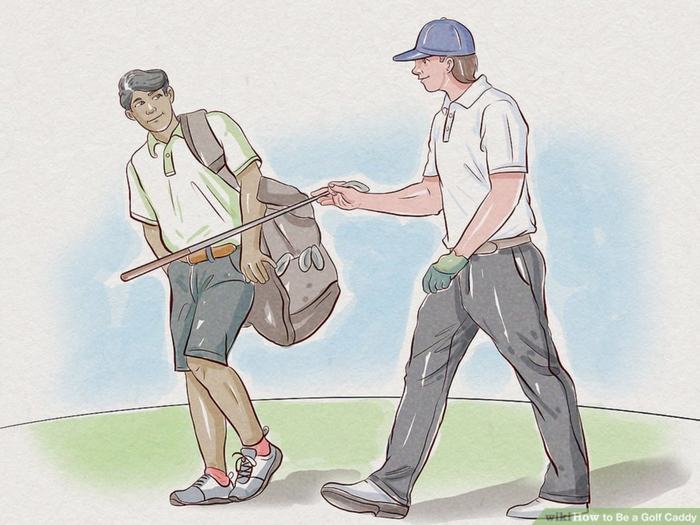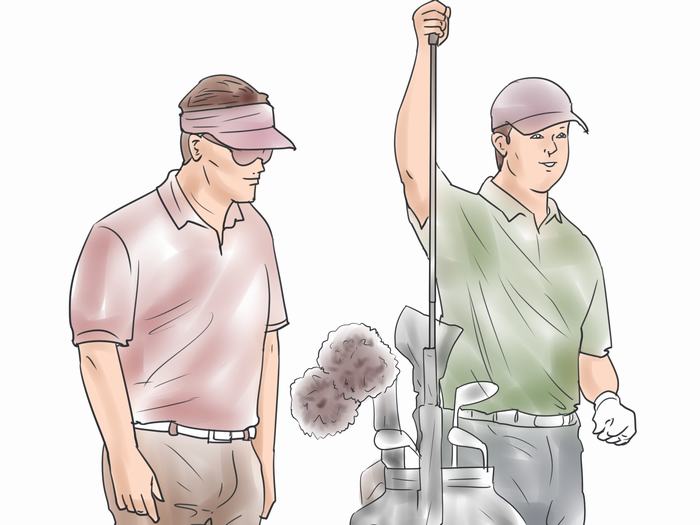The reasons for caddies were cultural, legal, but all that aside, do players in Vietnam actually need a caddie?
By Robert Bicknell
When tourists from the west come to Vietnam, the first thing they notice is that caddies are mandatory at all the golf courses, unlike back home where a caddie is a luxury. In most cases you have to either carry your own golf bag, rent a pull cart or buggy (golf car).
Very few courses in the West have caddie service available and even if they do, most times its local kids trying to earn some spending money. You’re not going to find a PGA Tour level caddie, but seeing that 99.999% of the players aren’t PGA Tour level either, it doesn’t matter.
For the most part, tourists go back home and tell everyone how great their golf in Vietnam was, especially the cute female caddies.
Unfortunately, here in Vietnam there is a movement underfoot by some players to eliminate caddies completely. The major reason is that golf they want cheap golf.
Now, before I delve into the pros and cons of caddies in Vietnam, let’s first understand why there are caddies in Vietnam in the first place.
The first two (new) golf courses to open in August 1993 were Kings Island in the north and Song Be in the south. The former was a Thai joint venture (since bought out 100% by BRG Vietnam), while Song Be was a Singaporean JV. Both Thailand and Singapore are big on caddie service. (NOTE: It was also these original two courses which resulted in the disastrous membership system we had for far too many years. Members got 25-50 years of hugely discounted golf, while the club made zero profit, but that’s something for another column)
Also, under the conditions of the JV land lease agreements, the golf courses were required to provide jobs for people displaced by the project. Thus, many jobs went to workers, either building or maintaining the courses, and their kids became caddies. Fair enough.
So, the reasons for caddies were cultural, legal, but all that aside, do players in Vietnam actually need a caddie?
Well, without a caddie, players would have to pull their own trolley, fix their own divots, rake their own bunkers, fix their own pitch-marks on the greens, line up their own putts and clean their own clubs. Not to mention looking for their own ball in the trees. They would also have to maintain the pace of play.
Having been here since the very beginning of golf in Vietnam, and having watched players in action, I have very mixed feelings about this.
As a club manager, I have seen many players act like they would rather have boiling oil poured in their mouth rather than rake a bunker. It simply doesn’t occur to them. Same thing for divot and pitch-mark repair, but they are the first to complain when their ball lands in an un-raked bunker, an unfilled divot, or their putt bounces offline due to pitchmarks.
The question of why the players don’t do normal GC maintenance is complicated.
Some refuse to do it out of the belief that the caddie must do it as it’s not the player’s responsibility (HINT: They’re wrong. See R&A/USGA Rules of Golf – etiquette). Others don’t feel it’s beneath them, but they paid for a caddie and he/she must do it. In this, some are diligent about reminding the caddie, while others are completely oblivious.
Still, there are players who did it when playing the now-defunct Ocean Dunes GC in Phan Thiet where they didn’t have caddies and players used only buggies. Many of them also sanded their own divots, raked their bunkers (albeit poorly) and occasionally repaired a pitchmark (usually only if on their putting line).
But they did it, so there is hope.
As a club manager, I have entertained the idea of a “buggy only” policy and simply hire extra maintenance staff to go out and fix the course twice a day. Of course, I would probably have to keep a few caddies for the VIPs as some things will never change.
The truth of the matter is that caddies, in general, are a pain in the ass for club management.
There are a lot of costs involved, plus 10 percent are unavailable for work at any given time. There are personality problems, complaints about the players, complaints from the players, complaints about the caddiemaster, complaints from the caddiemaster, health issues, pregnancies, etc.
Buggies are so much easier. They don’t give you headaches and you just have to wash them and plug them in at night instead of hiring cooks to make meals.
However, while that would make the cost for a round of golf less expensive for the player, the fact of the matter is that caddies are an important revenue stream for clubs and, despite what people think, golf courses do NOT make a huge profit as annual operational costs can run $2-3 million USD, so every revenue dollar helps.
In answer to the unspoken question, unless a golf club is doing massive amounts of rounds every day, they are usually not raking in huge profits. The profit in a golf course comes from villa / real estate sales.
In the interests of transparency, a club makes a gross profit of around $10 per round on a $20 caddie fee. The other part of the fee covers salary, meal, social insurance, uniform etc.
And because caddies have a lot of down time, they are not earning revenue during those hours, so that $10 profit gets whittled down in proportion to the amount of time the caddie didn’t work, so caddie fee gross profit is around $4 when all is said and done at the end of the month.
Also, the club loses roughly 8,400,000 vnd per caddie during the three months of training. So the club starts in the hole from the beginning and must recoup its investment in the training of a caddie. If a normal 18-hole course has 150 caddies, that’s 1.26 billion vnd (around $56,000) in training costs alone.
The downside of no caddies, besides being a loss of income for the club, is that it would also be a loss of income for a community.
Believe me when I tell you that caddies are part of the reason for the rapid growth of SonTay Town (a few km from Kings Island) and many other towns located near golf courses.
In my view, a golf course should provide local jobs and, whenever possible, they should buy locally too. The club should contribute to the local community, especially after taking so much land. To not do so would cause resentment and bad relations.
One thing that I am proud of is the fact that I helped provide thousands of jobs to impoverished kids over my 27 years of club management in Vietnam. Caddying helped pay for their education as well.
OK, so now we’re back to those who complain that golf is too expensive and don’t want a caddie. I find it strange that many of these people who complain are the same ones who drive a Lexus or other high-priced auto and think nothing of dropping a few hundred dollars in bets every round.
But I agree that golf is expensive in Vietnam, especially compared to Thailand.
The reason of golf is so high here is primarily because of the taxes and land costs. A 20 percent SCT (Special Consumption Tax) plus 10 percent VAT on top of that, so the club must charge more.
A $20 caddie fee isn’t the reason.
Golf in other countries is slowly dying out and part of this reason is people quacking about the prices. They want everything cheap and when the club accommodates them the standards begin to deteriorate.
But this doesn’t bother the quackers, they just move to another club in better condition and begin quacking there. Price wars ensue and, eventually, very few clubs are worth the money they charge and have to close from a lack of business.
The bottom line is that golf isn’t for everyone. It’s expensive and if a $20 caddie fee irritates you, or the thought of tipping the caddie 200,000 or more is keeping you awake at night, perhaps you should consider tennis instead. Better yet, try thinking about it this way…
Because of you, some poor kid has a job… and a future.
The article "CADDIES Grassroots of any course" was originally published on http://vietnamgolfmagazine.net/en/caddies-grassroots-of-any-course/






